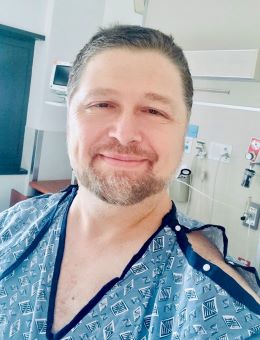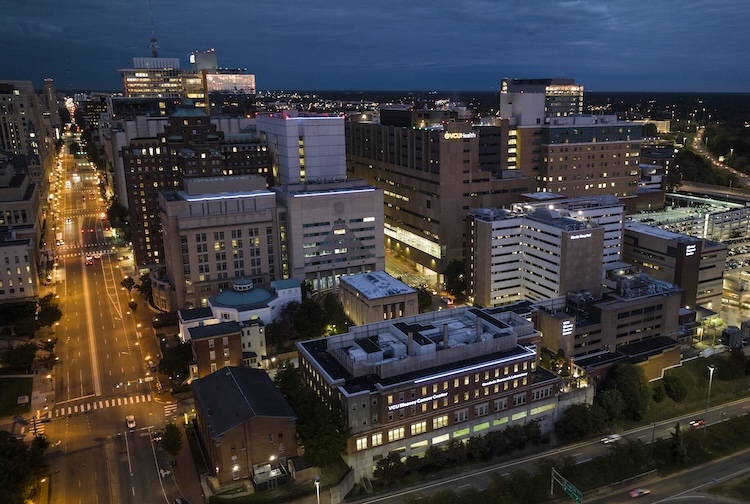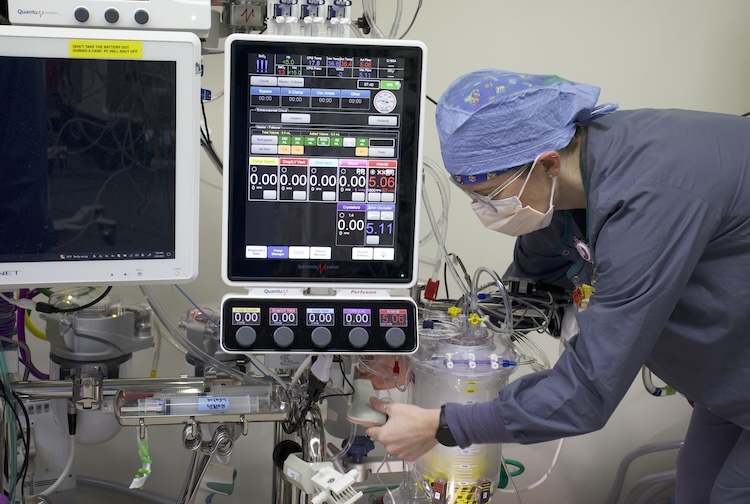After 10 years of waiting, a life-saving heart arrives
May 02, 2022 (Getty Images)
(Getty Images)
By Sean Gorman
Jason Bright was heading to his Petersburg steelworking job when he couldn't catch his breath.
“I couldn't even walk 10 steps,” Bright recalled of the incident, which took place more than 10 years ago. “I was like, 'Something's going on.'”
It was the first sign of heart trouble for Bright, who was in his mid-30s back then. He didn't know he had hereditary cardiomyopathy, and that his blood wasn't pumping properly through his body.
Doctors implanted a left ventricular assist device (LVAD) into his chest to pump blood from the left chamber of his heart to the aorta and on to the rest of his body. Patients with an LVAD — known as “the bridge” to a transplant — carry an external bag that holds a control unit and battery.
LVAD implanted, Bright got on the waiting list to get his heart.
And then he waited. And waited.
Bright, now 45, had no idea his journey to receiving a new heart would take 10 years. His wait is one of the longest for a VCU heart transplant patient, said Maureen Flattery, heart transplant program manager at VCU Hume-Lee Transplant Center. Median heart wait times are around six months, she said.
Many factors influence wait times
 “Jason had been around so long. The LVAD coordinators took great care of him. He knew everybody,” Flattery said. “And he did exactly what we want from a patient: He lived his life, took care of himself, and took care of his heart pump so that he would be a good transplant candidate when his time came.”
“Jason had been around so long. The LVAD coordinators took great care of him. He knew everybody,” Flattery said. “And he did exactly what we want from a patient: He lived his life, took care of himself, and took care of his heart pump so that he would be a good transplant candidate when his time came.”
A number of factors can push patients like Bright further back in line to get a transplant. He has type O blood — the most common blood type, which increased his competition for getting a compatible organ. And while his LVAD was doing its job keeping him alive, the flip side is that a functioning device meant sicker people with a more immediate transplant need were higher priority on the waiting list.
“Because he was so stable on his device, he was being passed over by the people who were not that lucky. They could have had pumps with problems or had a variety of other health issues that made them sicker,” Flattery said. “He was sort of disadvantaged in that way, but he was not the person who really, really needed to get a heart transplant really, really fast.”
Staying active on the path to transplant
As years passed while awaiting a new heart, Bright found support from his family and the outdoors. An avid hunter, he found solace in the woods and at fishing holes.
“You just got to keep your mind right,” Bright said. “I just kept on saying, 'One day it's going to be my turn. I'm going to get a second chance.'”
Although the LVAD helped him stay active, as time wore on, he had health problems. Brain bleeding caused memory loss and left him without the ability to raise his right hand. Bright also had atrial fibrillation, and a defibrillator was needed to shock his heart back into rhythm. In early 2021, he was bumped up to a higher priority level to get a transplant — then tested positive for COVID-19. So he waited on, until the infection cleared.
He turned to prayer.
“I prayed that it would come one day,” Bright said. “You never give up. You just got to keep on going forward.”
Flattery said Bright did the right thing by not letting the wait keep him from living his life.
“We don't know when it's going to happen, and you can't wake up every day and say 'maybe today,'” Flattery said. “If you're out you of the hospital, live your life. Take care of yourself and be ready to go when the time is right. Especially people like Jason who have been stable with an LVAD — it's going to be a long time.”
Prayers answered
Bright's device couldn't last forever. And he started having a problem with the electrical line that connected the LVAD pump inside his chest to the device's external battery.
Ironically, the malfunction was a blessing because it increased the urgency of getting him a heart.
Bright went to VCU Medical Center in early 2021 to get his LVAD fixed. And while there, he got the news he had been waiting to hear for a decade from the heart transplant coordinator at Hume-Lee.
“They said, 'We've got good news for you, Mr. Bright — you got a heart,'” he said. “I was like, 'Oh my gosh.' I was so excited. I called my fiancée and told her about it. We were all just ecstatic.”
On April 7, 2021, Hume-Lee surgeons transplanted Bright's new heart. His was just one of 37 life-saving heart transplants that the center performed last year. And it was one of the 3,817 heart transplants performed in the U.S. during a record year for heart transplants, according to UNOS.
A second chance for Bright — and new life for someone else
While Bright was undergoing a procedure that gave him a second chance at life, another life was on the way.
Just a few months after being released from the hospital, Bright and his fiancée had a daughter. Now that Bright no longer needs his LVAD, his daughter can crawl around near him without him worrying about her getting snagged on his wiring. He can also take a shower, swim in the ocean and take a dip in the swimming pool without worrying about damaging a battery-powered heart pump.
“If it wasn't for the LVAD wire acting up, I could still be on the transplant list,” Bright said.
To others awaiting their transplant, Bright says keeping a clear head and turning to family helped. Most important, he says, is to keep going.
“Every day, you keep on going forward,” Bright said. “You got to stay active. You live your life. You just can't stand still. It all worked out for me: I got a heart. “
Sign Up for Transplant E-Newsletter




